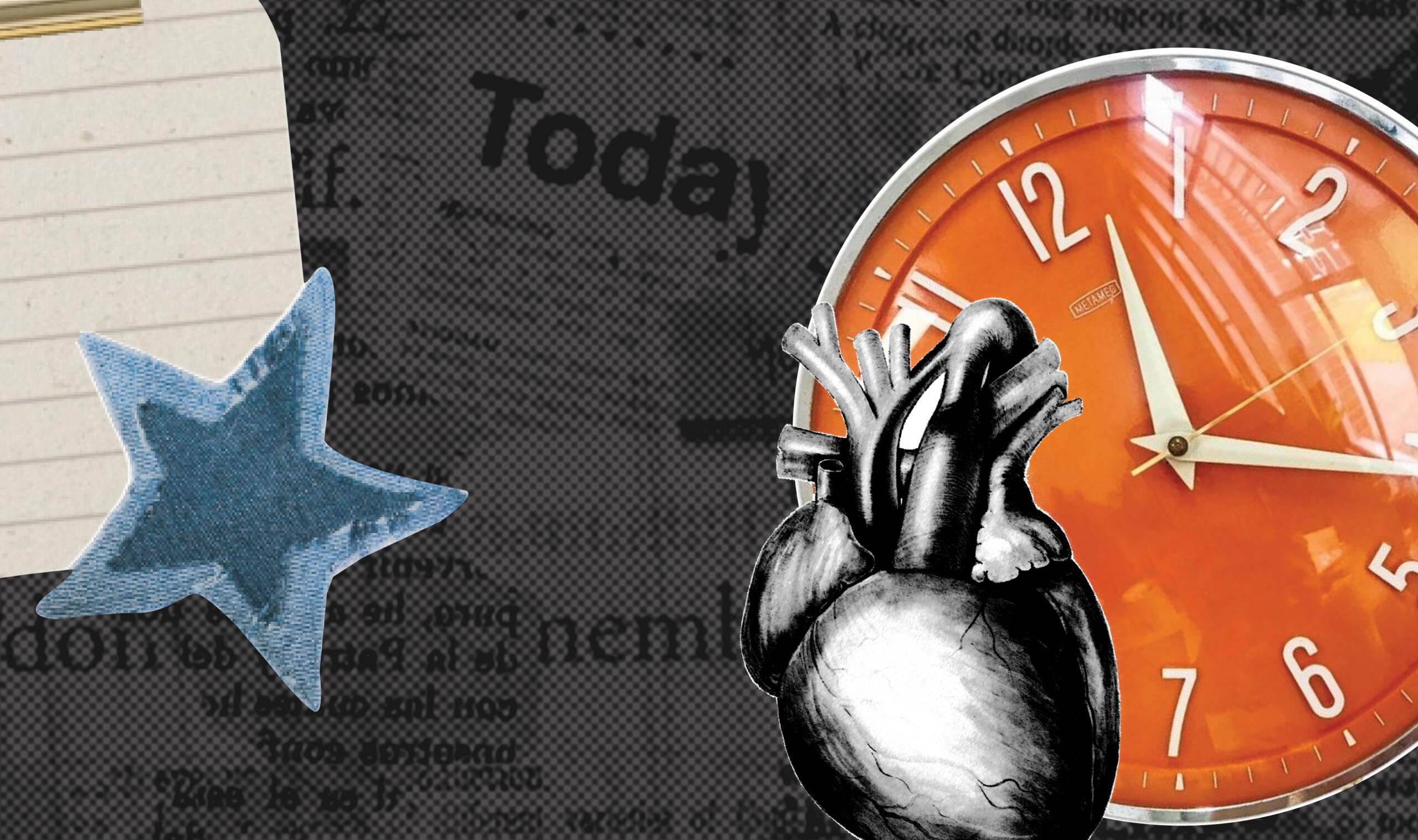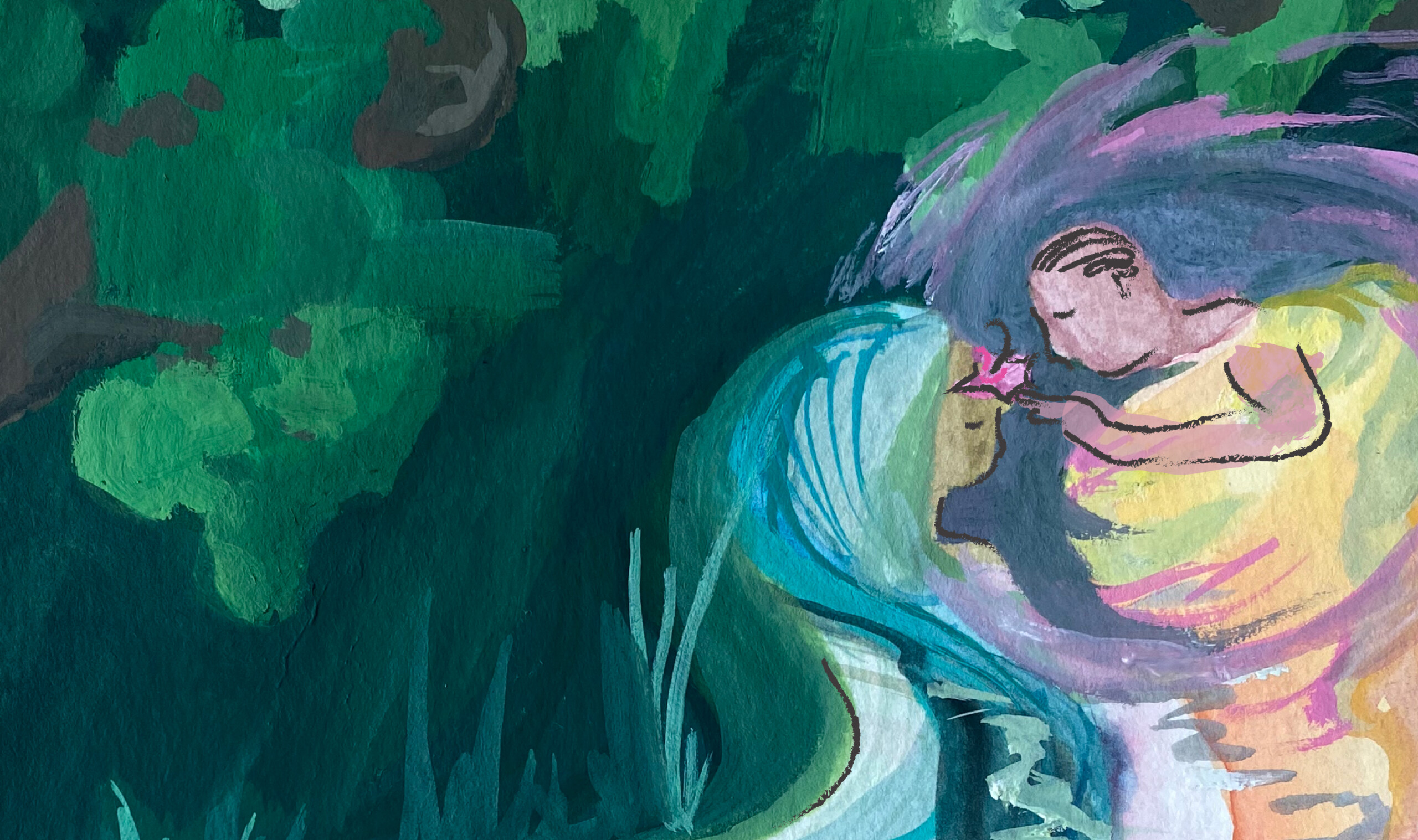Grief and Whimsy: Ruby Carter and Roxy Orkney Bring Worlds to Life in Alice by Heart
This past spring, current Cornish Performance Production students Ruby Carter (she/her) and Roxy Orkney (they/them) were the lead costume designers for Alice by Heart—a contemporary musical that reimagines Alice’s Adventures in Wonderland against the backdrop of the London Blitz.
As co-designers, Ruby and Roxy worked side by side to develop two distinct visual languages: the grim reality of wartime London and the colorful surrealism of Wonderland. But the real challenge? Making those two worlds collide in real time, right on stage.
“It was important for us to create a really clear distinction between Wonderland and the real world,” said Roxy. “We wanted the audience to feel the shift between fantasy and grief through color, texture, and silhouette—without needing a line of dialogue to explain it.”
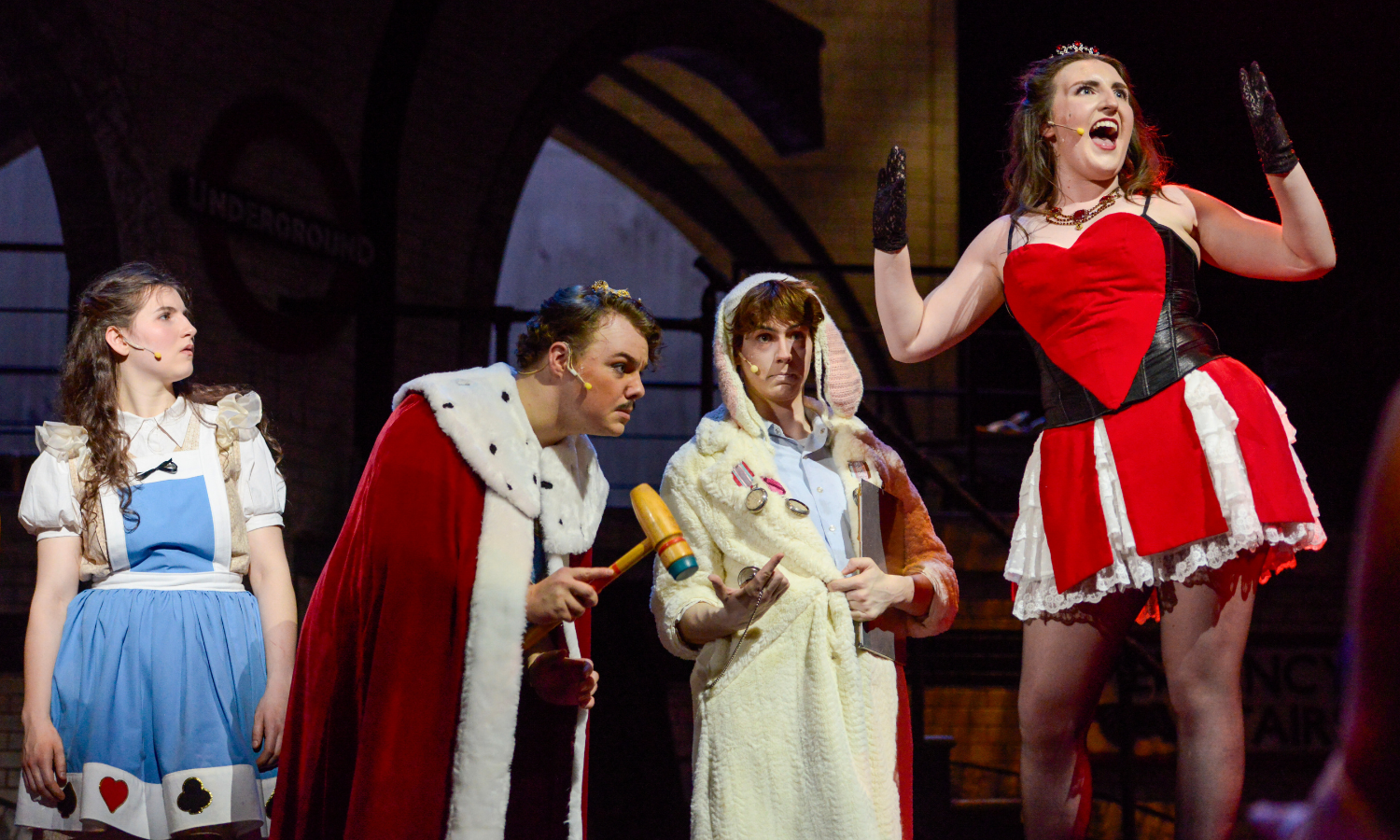
The story’s central theme, that imagination and loss are deeply intertwined, was a guiding principle in the costume process. “Whimsy and grief are always present together in this show,” Roxy said. “And honestly, I feel that’s true in real life too. We wanted the costumes to reflect the tension of being inside something magical, but still tethered to something painful.”
For Ruby, childhood memories became a touchstone. She drew inspiration from vintage fairy tale anthologies and a well-loved copy of The Girls’ Book of Fairies, a book they’ve carried since childhood. “Having a show that’s based on a children’s book was the perfect reason to bring that source back,” she shared.
Designing Alice by Heart also came with a structural twist: nearly all costume changes had to happen on stage—and be done by the actors themselves. This meant every piece needed to be layered, rigged, and actor-friendly while still delivering visual impact.
“That prompt became one of our biggest strengths,” Ruby said. “We had to make decisions that told the full story through color and shape. Nothing could be over-designed or over-complicated. It all had to serve the transformation.”
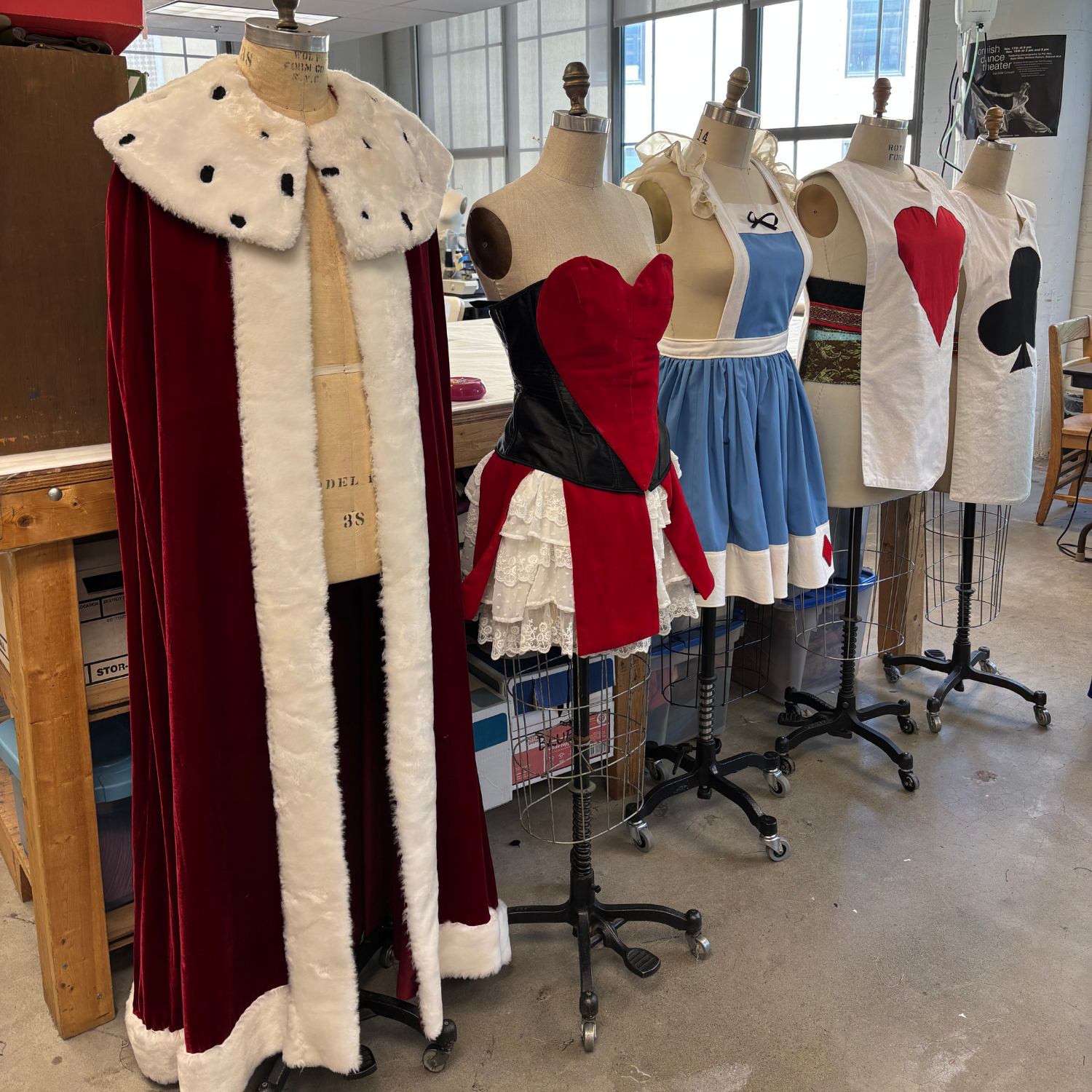
That sense of transformation wasn’t just technical, it was emotional too. Many of the costumes evolved alongside the actors’ performances. Some characters, like the Queen of Diamonds and Duchess, went through multiple redesigns over the course of the production. Others, like the Cheshire Cat, completely changed direction once casting was finalized.
“The actor playing Cheshire Cat brought this whole new energy to the character,” said Roxy. “Suddenly we knew that this costume needed to be a little more ‘rough and tumble.’ The design clicked once the person was in the room.”
Collaboration with actors wasn’t just welcomed—it was foundational. “We used to be performers,” said Ruby. “We know what it feels like to put on a costume that doesn’t fit, that doesn’t feel right, or doesn’t support the character. So at every fitting, we’d ask: ‘How does this feel? What’s working? What’s not?’”
That process led to small but impactful changes, like removing a “too-cute” accessory to give a
character more gravitas, or incorporating a piece an actor loved so much they didn’t want to
take it off.
“One of our actors told us she had never been dressed femininely on stage before,”
Roxy said. “So we started her design from that conversation. That’s where it should
always start, with the person in the costume.”
Despite the months of preparation, the team still made changes up to opening night and kept
evolving the work throughout technical rehearsals. “You’re holding your breath until it’s all on
stage,” Ruby said. “There’s this moment where you realize: oh, we do have a show. We can
polish from here.”
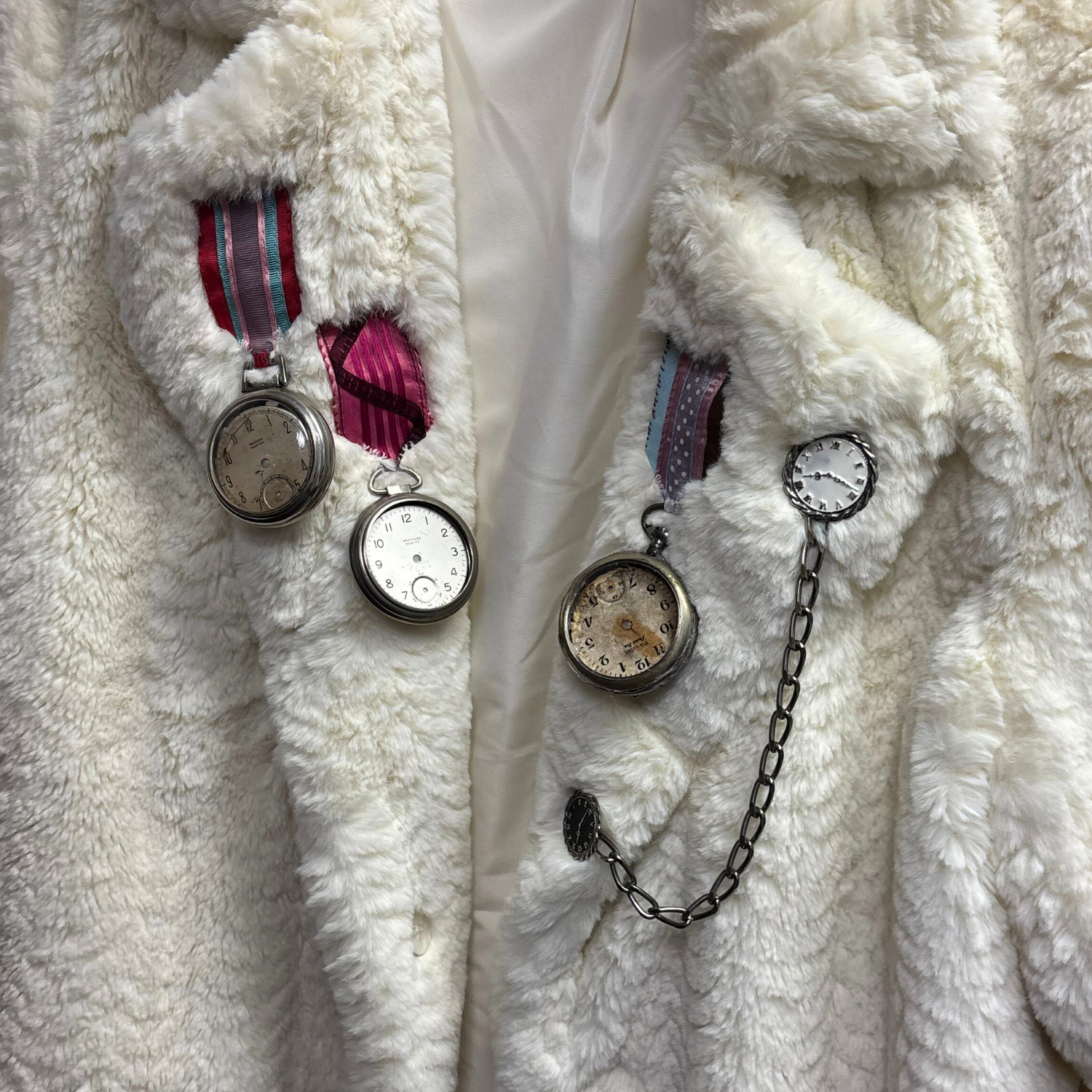
When asked about challenges, both designers shared the same answer: perfectionism. “There
wasn’t one catastrophic issue,” Roxy said. “It was the little things—staying up too late,
obsessing over a hemline, reworking a costume that was already working. We had to learn to let
go and trust that the audience was being taken care of.”
The process, they agree, was intense but transformative. The two had been close friends before
the show, but Alice by Heart gave them something rare in the world of theatre: the chance to
truly co-design, to share every decision, and to create side by side.
“You don’t get this in the real world,” said Ruby. “Usually you’re the designer or the
assistant—but not equals. To be in each other’s creative process for eight months
was so special.”
Roxy agreed. “I could design this show for the rest of my life.”
Whether reimagining a beloved story or building worlds from the ground up, Ruby and Roxy are
shaping a design practice that’s equal parts collaboration, curiosity, and care. Their work on
Alice by Heart was more than a creative achievement—it was a testament to what’s possible
when emerging artists are trusted to lead, experiment, and respond in real time.
You can follow Ruby Carter on Instagram @ruby.s0fia, and keep an eye out for more from both
designers in Cornish College of the Arts’ upcoming Theatre productions next academic year.


